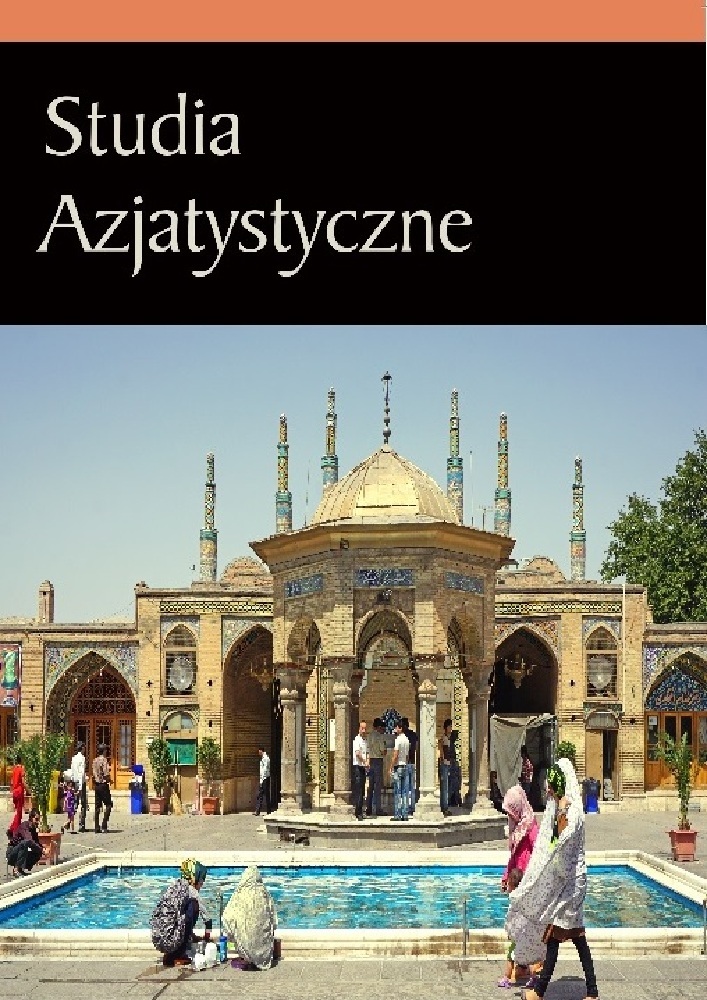Abstract
In his famous book The Consumer Society: Myths and Structures, Jean Baudrillard refers to the model of exchange defined by the myth of the pact with the Devil. The things we sell: our reflections in the mirror, our shadows, or the products of our work do not remain safely separate from us, but instead turn against us and take their revenge, sometimes even bringing us to self-destruction. However, the French philosopher claims that, nowadays, the tragedy of the subject haunted by its spectre is no longer relevant as the subject poses a spectrum, and all transcendence is lost in the order of signs. The structure of the myth about the pact with the Devil appears in Murong Xuecun’s novel Most Die of Greed. In post-reform and opening-up China, an average young man meets a mysterious older millionaire and gets involved in a risky game, in which unbridled consumption leads to degeneration and, eventually, gruesome death. As a 70 hou (post-1970, born in the 1970s) writer, Murong Xuecun addresses the transformations in his generation’s attitudes and values caused by rapid changes in both material and ideological spheres of their lives.
References
Baudrillard, Jean. 2006. Społeczeństwo konsumpcyjne. Jego mity i struk-tury. Sławomir Królak (przeł.). Warszawa: Wydawnictwo Sic!.
Murong Xuecun. 2010. Duoshu ren si yu tanlan [Większość umiera z chciwości]. Beijing: Zhongguo Heping Chubanshe.
van Crevel, Maghiel. 2008. Chinese Poetry in Times of Mind, Mayhem and Money. Leiden: Koninklijke Brill NV.
Zhang, Lijun, Chang Sijia. 2015. 70 hou zuojia: ruhe chengwei wenxue “zhongjian dai” [Pisarze 70 hou: jak zostać centralnym pokoleniem li-teratury], Xiaoshuo pinglun 1 (2015), 150-158.
Zhang, Yanmei. 2014. “70 hou” zuojia xiaoshuo chuangzuo de ji ge gu-anjianci [Kilka kluczowych słów dla twórczości prozatorskiej pisarzy “70 hou”], Shanghai wenxue 7 (2014), 106-112.
Źródła internetowe
Farrar, Lara. 2009. For Many Chinese, Literary Dreams Go Online, CNN website, http://edition.cnn.com/2009/SHOWBIZ/books/02/15/china.publishing/index.html?iref=nextin, dostęp: 07.03.2016.
Li, Shijiang. 2007. Bo Zhang Ning de “70 hou zuojia shuailao lun” [Pole-mika z opinią Zhang Ninga o „postarzałych pisarzach 70 hou”], Beijing wenyi wang, http://www.artsbj.com/html/observe/zhpl/wypl/wenxue/1125844.html, dostęp: 17.09.2015.
Meng, Fanhua. 2013. 70 hou de shenfen zhi mi yu wenxue diwei [Niejasna tożsamość „70 hou” i ich pozycja w literaturze], Zhongguo zuojia wang, http://www.chinawriter.com.cn/2013/2013-06-06/164208.html, dostęp: 20.09.2015.
Murong Xuecun. PEN America website, https://www.pen.org/murong-xuecun-1, dostęp: 07.03.2016.
Shu, Jinyu. 2009. Zhongguo “70 hou” zuojia xianzhuang diaocha [Badanie obecnej sytuacji chińskich pisarzy „70 hou”], Zhongguo zuojia wang, http://www.chinawriter.com.cn/news/2009/2009-12-04/79961.html, dostęp: 17.09.2015.
Xing, An. 2010. Huaiyizhuyizhe, “guduzhe” yu ganga yi dai – cong daiji guanxi kaocha dangjin wenxue fasheng de yitong [Wątpiący, „samotnicy” i kłopotliwe pokolenie – badanie różnic i podobieństw między pokoleniami we współczesnej literaturze], Zhongguo zuojia wang, http://www.chinawriter.com.cn/bk/2010-02-04/41637.html, dostęp: 01.10.2015.
License

Ten utwór jest dostępny na licencji Creative Commons Uznanie autorstwa 4.0 Międzynarodowe.
